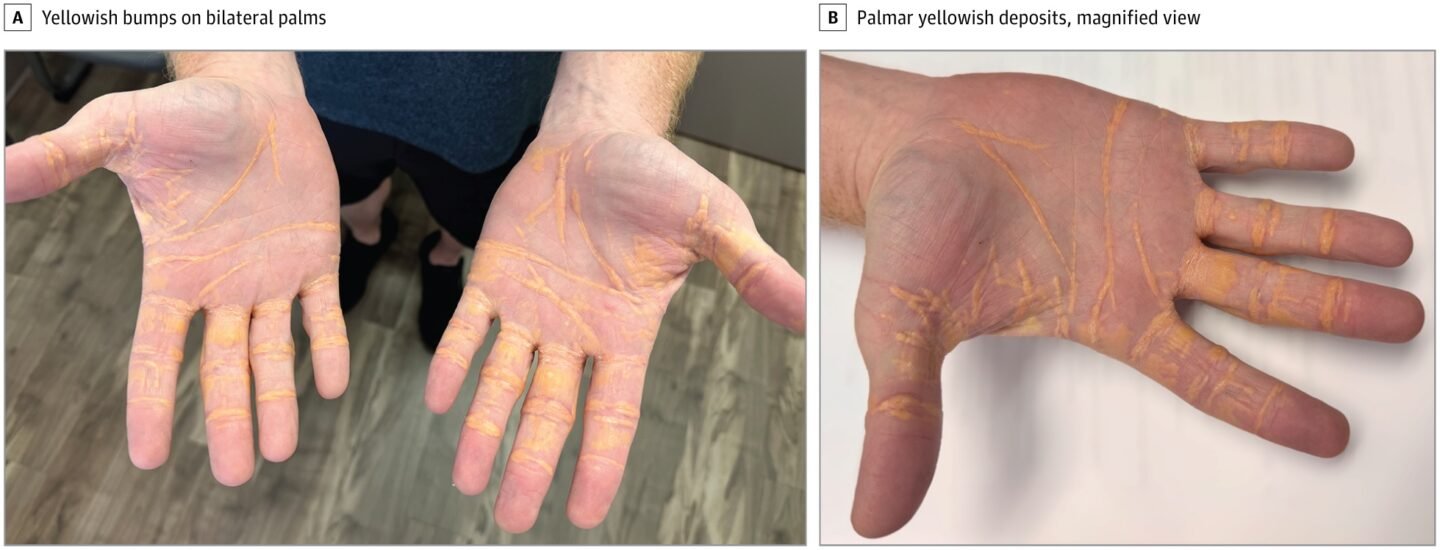Physical Address
304 North Cardinal St.
Dorchester Center, MA 02124
Physical Address
304 North Cardinal St.
Dorchester Center, MA 02124

what can go Wrong about eating a very high fat diet of beef, cheese and sticks of butter? Well, for one thing, your cholesterol levels can reach such stratospheric levels that lipids start leaking out of your blood vessels, forming yellow nodules on your skin.
This was the disturbing case of a Florida man who presented to a Tampa hospital with a three-week history of painful, yellow eruptions on the palms of his hands, soles of his feet, and elbows. His case was published today in JAMA Cardiology.
The man, said to be in his forties, told doctors he had been on a “carnivore diet” eight months earlier. His diet included 6 to 9 pounds of cheese, sticks of butter, and extra fat from hamburgers a day. Since adopting this brow-raising diet plan, she claims to have lost weight, increased her energy levels, and improved her “mental clarity.”
Meanwhile, his total cholesterol level exceeded 1000 mg/dL. In context, an optimal total cholesterol level Under 200 mg/dLwhile 240 mg/dL is considered the threshold for “high.” The cardiologists noted that before her high-fat diet, her cholesterol ranged from 210 mg/dL to 300 mg/dL.
Cardiologists diagnosed the man with xanthelasma, a condition in which excess blood lipids spill out of blood vessels and form localized lipid deposits. Escaped lipids are normally taken up by circulating white blood cells called macrophages. However, in the case of xanthelasma, the amount of lipids is too high for macrophages, which turn into foam cells with excess cholesterol, leading to visible deposits.
Such deposits are often seen around the eyes (a condition called xanthelasma palpebrum), which often affects people with lipid abnormalities such as familial hypercholesterolemia. It is thought that constant blinking of the eye over a person’s life can eventually weaken the capillaries in this area, allowing lipid seepage. However, although this may be a more common presentation of the condition, lipid deposits can occur anywhere in the body.
Xanthelasma – specifically xanthelasma palpebrarum – is Not always associated with high cholesterol and heart risk, but having high total cholesterol Strongly associated with coronary heart disease.
Case studies do not provide information on the man’s perspective. However, the authors wrote that the case “highlights the influence of dietary patterns on lipid levels and the importance of managing hypercholesterolemia to prevent complications.”
This story originally appeared on Ars Technica.